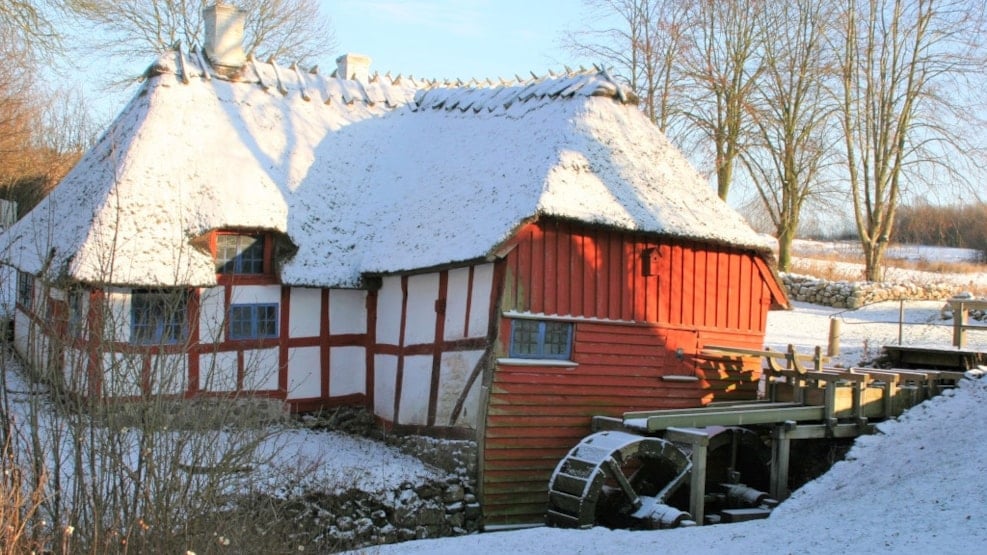
Geopark: Kaleko Vandmølle
One of the oldest watermills in Denmark for the milling of grain.
Just a few km east of Faaborg is a small village called Kaleko. Here you can find one of the oldest watermills in Denmark for the milling of grain. Milling was already being done here in the Middle Ages. In the 1600s the mill came into the ownership of Holstenshus, and the oldest parts of the mill go back to this time period. These parts are partially located below the level of the courtyard.
Previously, Kaleko Mill received water from Rislebækken as well as two springs that all ran into a very large millpond. Today the mill only receives water from Rislebækken, which is collected in a small millpond so that the water can run for a few hours in the flume and out across the two overshot wheels. Each of the wheels drives a grinder with a “bottom drive shaft”. Almost all watermills were constructed this way in the 1700s, however, with the invention of the “star wheel”, which enabled the distribution of the drive force to several grinders and milling machinery, this new method came into broad use in the first half of the 1800s and practically all watermills and windmills used it—just not Kaleko.
Operation of the mill ended in 1912, and in 1917 Kaleko Vandmølle was opened as a mill museum. Today, the mill is owned by Faaborg Museumsforening and is run by volunteers connected to Øhavsmuseet Faaborg (The Archipelago Museum of Southern Fyn).
In the Rislebækken stream valley, east of the watermill, are some occurrences of postglacial lime tufa reaching a maximum thickness of 5 m. Parts of these deposits have been used by locals for agricultural purposes.